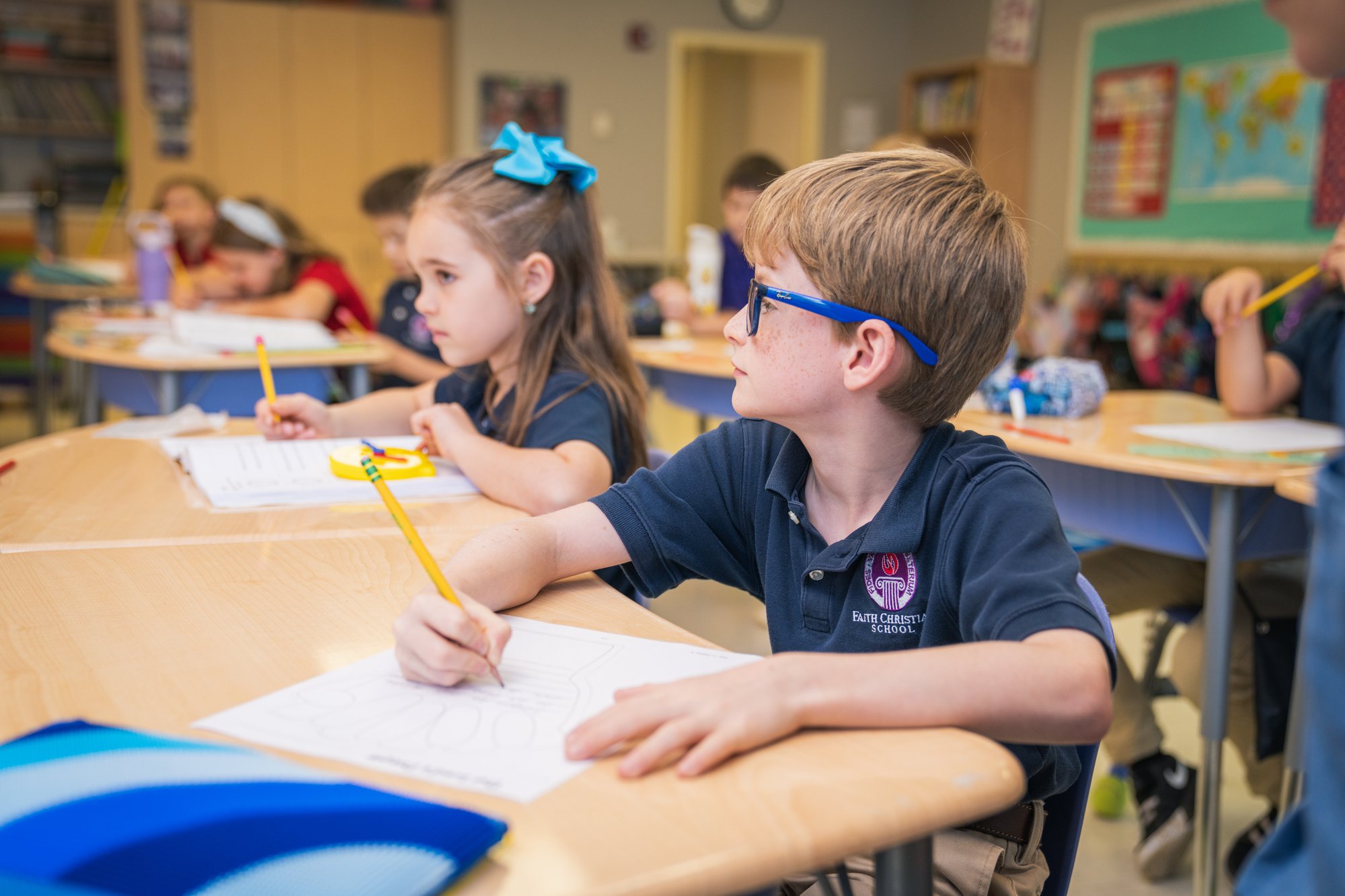
In a Christian, classical education the Scriptures are the foundation and lens through which we teach everything, not simply adding a memory verse into a math or science lesson.
If there is anything that must be taught well in a Christian school, it is the Bible. Right? BUT when you consider teaching Bible classically, it opens up a way of considering how God’s Word is the basis for every part of our day. Nature study, the arts, literature, history and even grammar are viewed as having relationship to each other because of WHO created them, and these relationships naturally provide a greater opportunity to explore the Bible. The Scriptures are the foundation and lens through which we teach everything, not simply adding a memory verse into a math or science lesson. Still, there is a designated time during our day when our students will consider a passage of Scripture, learn more about what God is saying through it, and thus find themselves as part of a bigger story by engaging in the meaning.
As soon as students are able, they will read the text being considered that day from their own Bibles. At Faith Christian School, we approach the Bible in a way that does not diminish the actual historical event or seem like an imaginative cartoon just to entertain our minds. Pictures can certainly help gain understanding. However, instead of using “cartoons” about events in the Bible, our teachers find beautiful art pieces for their students. Consider the images below. When we think about the courage it took for David to stand up against Goliath, which picture better shows the trust that David must have had in God?

Don’t we want our young ones to see the courage and trust in God that David needed and so aim to be like him? Taking this approach also helps tie in beautifully to understanding our place in history.
Our students discover the events of the Bible within the timeline of history. Biblical events are not separated from other historical events. Rather, our grade levels explore a section of the Bible and history chronologically. It is absolutely vital to understand and study a portion of the Bible within its important context of culture and other passages of Scripture. This approach leads to grasping our personal place and responsibility in the world (application). At FCS, we take seriously that we must communicate well to our students that we have examples in the Bible for a reason: to learn from and recognize that we are part of God’s story! All other parts of the day and even the curriculum flow from this desire.
Many additional weekly activities add further knowledge and training that support our Bible pedagogy. These include Peacemakers principles, catechism recitation, memory verses, chapels, and practicing our virtue of the month.
When our students begin to take ownership of what they are learning, their minds and hearts are more open to follow in actions. Yes, we want to help our students grow in the knowledge of the Bible, but even more, we want our students to learn to live in a manner full of wisdom, virtue, and love. We want them to love the amazing God who so deeply loves them. Isn’t this the true goal of education?
At the heart of teaching the Bible, then, our teachers strive to teach in a way that helps our students more deeply understand that they are part of a real story – God’s story.
- By Mary Susan Williams



-1.png?width=296&height=50&name=Back%20To%20All%20Stories%20(1)-1.png)